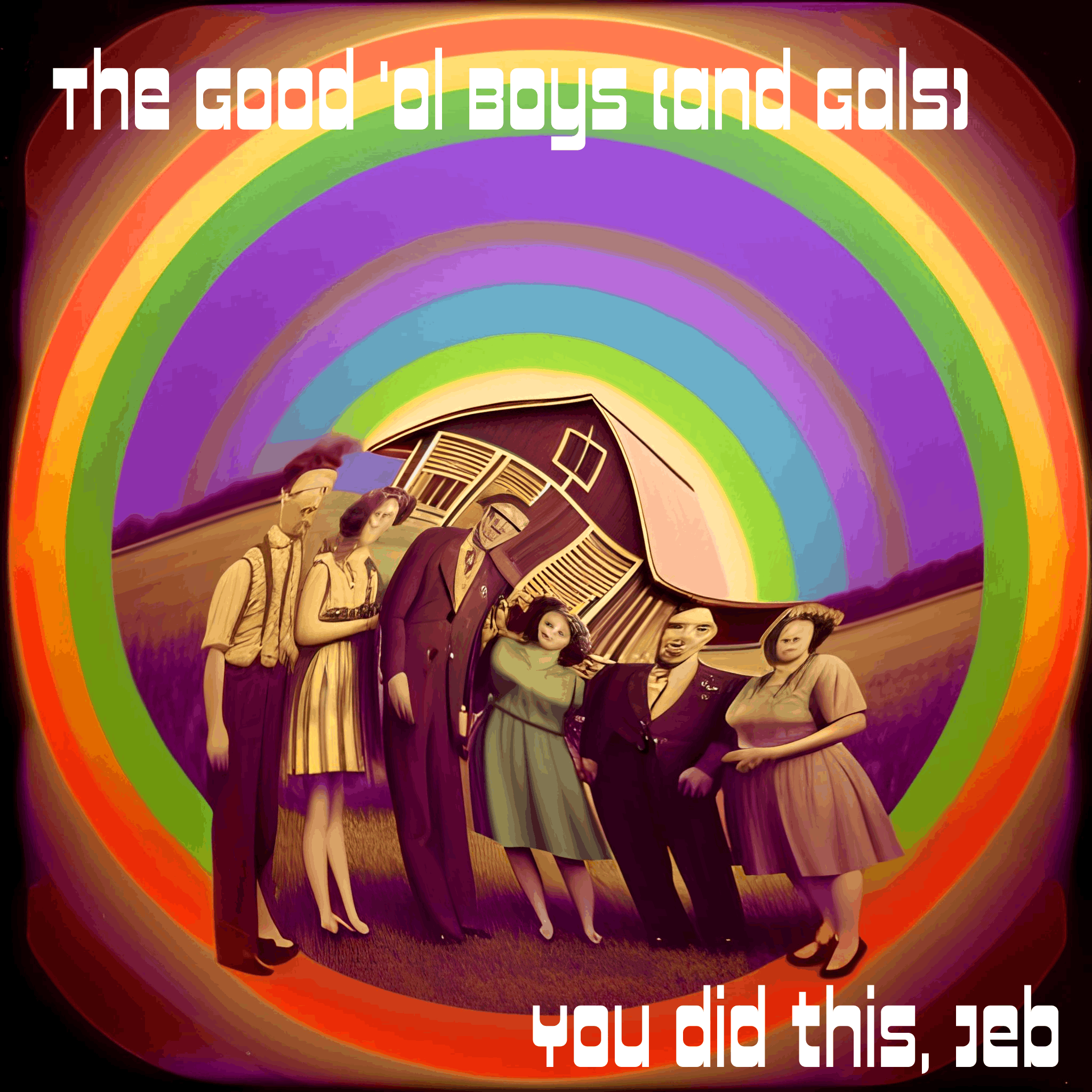Final Grade: B
YouTube: https://youtu.be/GfjWSCCiPQQ
Song Prompt:
Compose a typical western swing song. 2/4 time, key of D Major, 100 BPM. 1940s barn dance music. Strong back beat. Many horns. Honky tonk piano and slide guitar. Use your creativity and imagination, but make it jazzy yet with very consonant melodies and chord changes.
So much for consonance. But I’ll use it as yet again, it illustrates why human imagination is superior to AI. The poor bastards were thirsty. Not cool, Cousin Jeb, not cool.
Image Prompt:
Barn Dance Western Swing album cover (I Photoshopped the result)
Welcome to StableAudio.com, where we dive into the enchanting world of Americana Western Swing music. Join us as we explore the sounds of ‘The Good ‘Ol Boys (and Gals)’ band, taking you back to the lively 1940s barn dance era, before Jeb just wrecked everything.
Table of Contents
- Introduction
- The Magic of Americana Western Swing
- Band Spotlight: The Good ‘Ol Boys (and Gals)
- Listen Now
Introduction
Step into a time machine with StableAudio.com as we transport you to the vibrant world of Americana Western Swing music. Get ready to tap your feet and swing to the rhythm of the past!
The Magic of Americana Western Swing
Imagine a fusion of jazzy melodies, honky-tonk piano, slide guitar, and the infectious energy of a barn dance. That’s the essence of Americana Western Swing – a genre that captures the spirit of a bygone era with its lively tunes and toe-tapping beats.
Band Spotlight: The Good ‘Ol Boys (and Gals)
Meet the talented musicians of ‘The Good ‘Ol Boys (and Gals)’ band, masters of the Western Swing sound. With their horn section, strong backbeat, and melodic chord changes, they bring the barn dance experience to life with every performance.
Listen Now
Ready to immerse yourself in the world of Americana Western Swing? Click here to listen to a sample of the toe-tapping tunes that will transport you back to the 1940s barn dance scene.
Learn More
Western Swing is a genre of music that originated in the United States in the early 1920s, blending country, jazz, and blues styles to create a unique sound that has become a beloved part of American music history. The genre emerged in the rural areas of the American West and Southwest, particularly in Texas, Oklahoma, and California, where it quickly gained popularity among audiences looking for a new and exciting form of entertainment.
The origins of Western Swing can be traced back to the dance halls and honky-tonks of the Southwest, where musicians began experimenting with combining the traditional sounds of country music with the lively rhythms of jazz and blues. One of the key figures in the development of the genre was bandleader Bob Wills, who formed the pioneering group The Texas Playboys in the 1930s. Wills and his band were instrumental in popularizing Western Swing and bringing it to a wider audience through radio broadcasts and live performances.
Western Swing quickly became a sensation, with its infectious blend of fiddles, steel guitars, and saxophones drawing crowds to dance halls and nightclubs across the country. The genre’s popularity reached its peak in the 1940s and 1950s, with Western Swing bands like Bob Wills and His Texas Playboys, Spade Cooley, and Milton Brown and His Musical Brownies dominating the airwaves and concert stages.
One of the defining characteristics of Western Swing is its emphasis on improvisation and virtuosic musicianship. Musicians in Western Swing bands were known for their ability to effortlessly switch between different musical styles, blending elements of country, jazz, and blues to create a sound that was uniquely their own. This versatility and creativity helped to set Western Swing apart from other genres of music and cemented its reputation as a vibrant and dynamic form of entertainment.
In addition to its musical innovations, Western Swing also played a key role in breaking down racial barriers in the American music industry. Many Western Swing bands featured African American musicians, who were able to showcase their talents and contribute to the development of the genre in ways that were not always possible in other genres of music. This inclusivity and diversity helped to make Western Swing a truly American art form, reflecting the melting pot of influences that shaped its sound.
Despite its initial popularity, Western Swing began to wane in the 1960s and 1970s, as other styles of music such as rock and roll and country music gained prominence. However, the genre experienced a resurgence in the 1980s and 1990s, as a new generation of musicians rediscovered its unique sound and began incorporating elements of Western Swing into their own music. Today, Western Swing continues to be celebrated and performed by musicians around the world, preserving its legacy as a vibrant and influential genre of American music.
In conclusion, Western Swing is a genre of music that emerged in the United States in the early 1920s, blending elements of country, jazz, and blues to create a unique and infectious sound that has captivated audiences for decades. The genre’s roots in the dance halls and honky-tonks of the Southwest, combined with its emphasis on improvisation and virtuosic musicianship, have helped to make Western Swing a beloved part of American music history. Despite its ups and downs over the years, Western Swing continues to be celebrated and performed by musicians around the world, ensuring that its legacy as a vibrant and influential genre of music will endure for generations to come.
